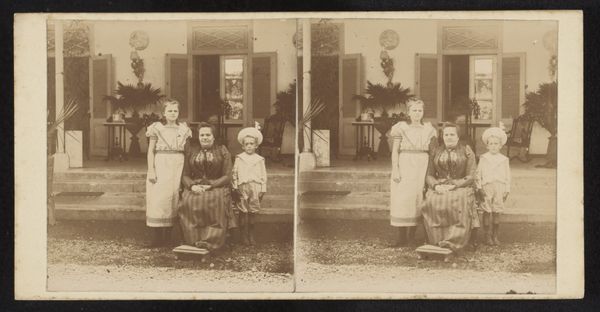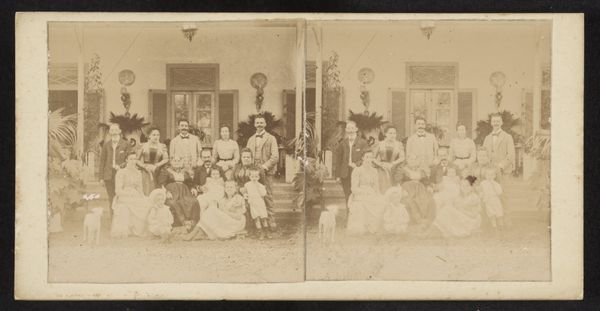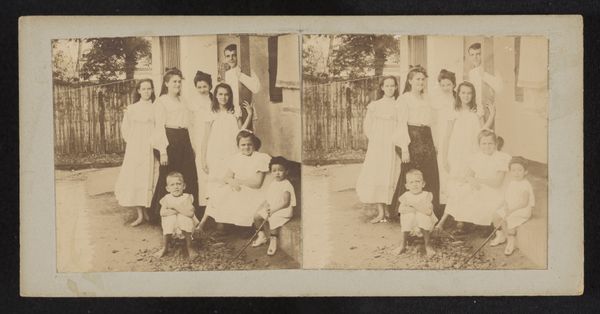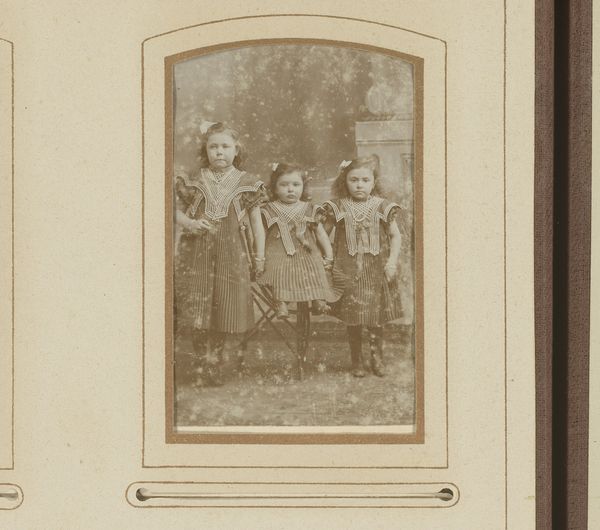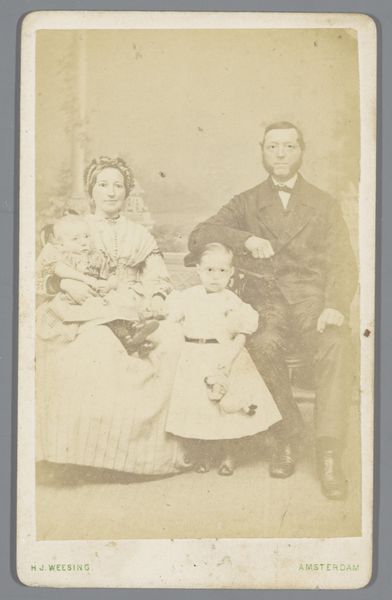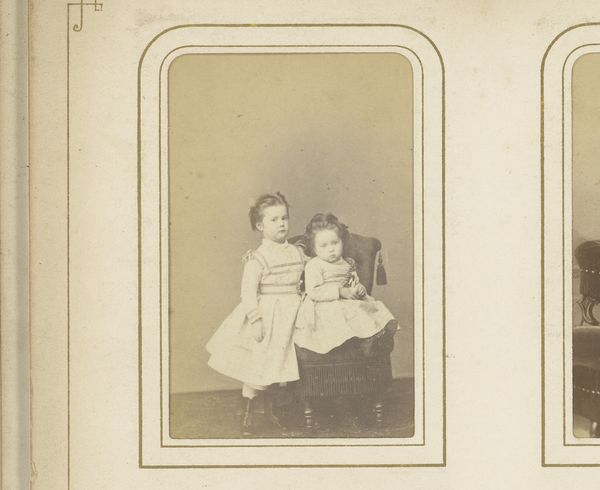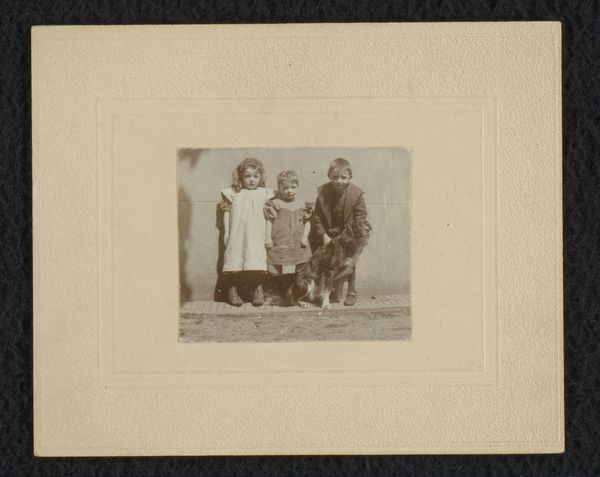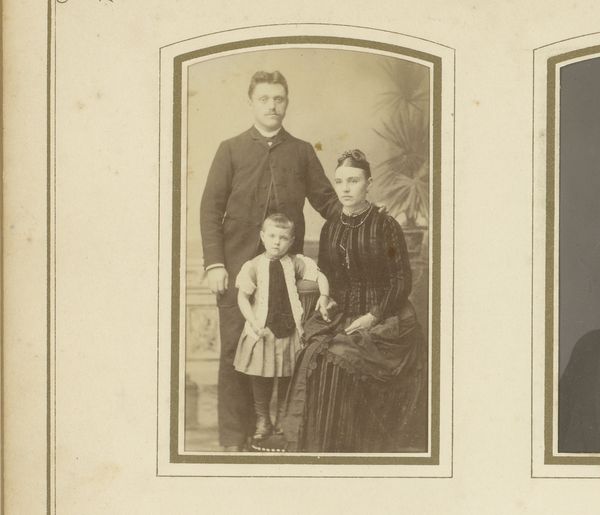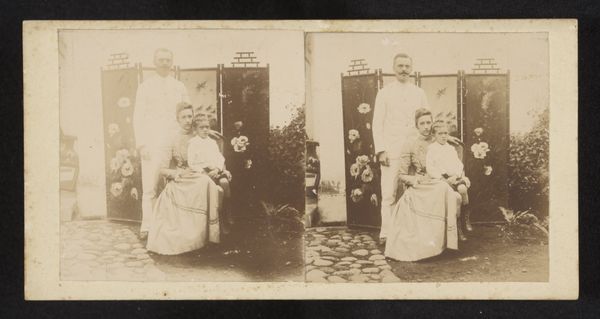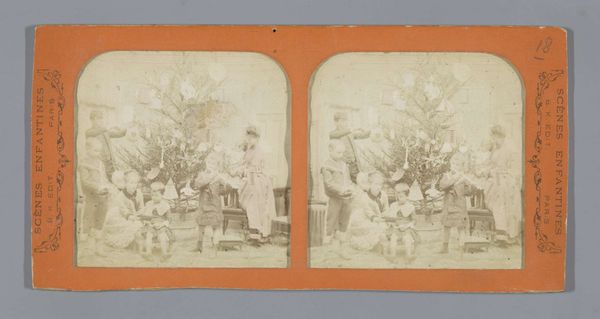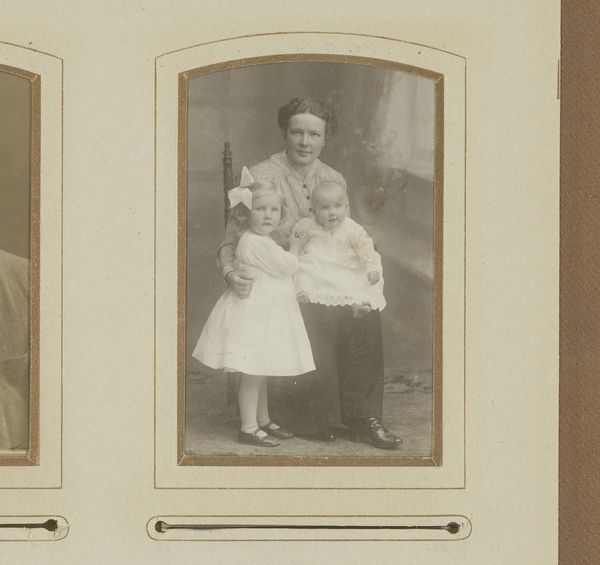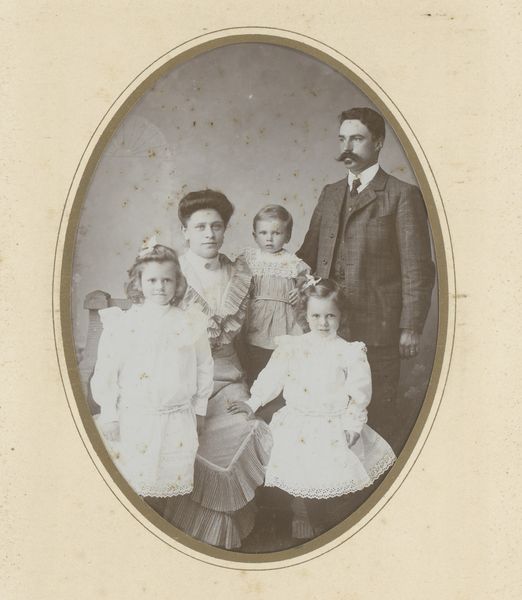
photography
#
portrait
#
still-life-photography
#
photography
#
historical photography
#
group-portraits
#
19th century
Dimensions: height 83 mm, width 81 mm, height 88 mm, width 178 mm
Copyright: Rijks Museum: Open Domain
Curator: Looking at this historical photograph, its formality really stands out. I sense a strong performative aspect to the image; almost like a social requirement of the era, to display wealth and domesticity. Editor: It has an air of faded grandeur, doesn’t it? The sepia tones, the family grouped in front of what appears to be a sizable home. There’s a certain material weight even in the photograph itself. We can almost feel the coated paper used in early photographic printing. Curator: Indeed. It’s titled "Familieportret" or "Family Portrait." Robert Julius Boers likely took this between 1900 and 1922. Let's consider how this image functions within its specific historical context. Photography, still relatively novel, became a tool for solidifying social status. Note how each member is carefully posed; the clothing crisp and unblemished—everything contributing to an idealized vision of family life. It prompts us to think about race, identity, and maybe even Dutch colonialism within such portraits. Editor: I'm struck by the detail of the house itself. Note the pillars, the symmetry, and even what seems to be decorative flora on display, signs of affluence carefully curated for the shot. The entire image hinges on showing a certain quality of life—dependent on specific types of labor and resources to maintain. Who produced that emulsion for the photographer, and where did these expensive outfits come from? These details point to a system of production often overlooked in portraiture. Curator: That’s an excellent point about the labor. Focusing on these images in contemporary contexts highlights how ideas around race and class have historically been visually constructed through them. Are we seeing a truly candid representation, or one manufactured for posterity, even propaganda perhaps? And whose gaze are they trying to appeal to or impress? Editor: Exactly! I'd even add, what kinds of chemicals were necessary to process such an image at the time? Considering not just what we *see* in the photo, but what materials were necessary to make it exist—and their associated ecologies—is crucial. Curator: The act of preservation through art itself carries profound meaning—the portrait here speaks to an intention to create an identity narrative for those in the image and the context of production as an industrial manufacturing achievement. Editor: Ultimately, this photograph makes us ask, 'What gets valued, preserved, and seen…and at whose expense?’ Curator: I think approaching “Familieportret” from both angles gives a full and complicated picture. Editor: Precisely. Looking at this, I can only agree.
Comments
No comments
Be the first to comment and join the conversation on the ultimate creative platform.
